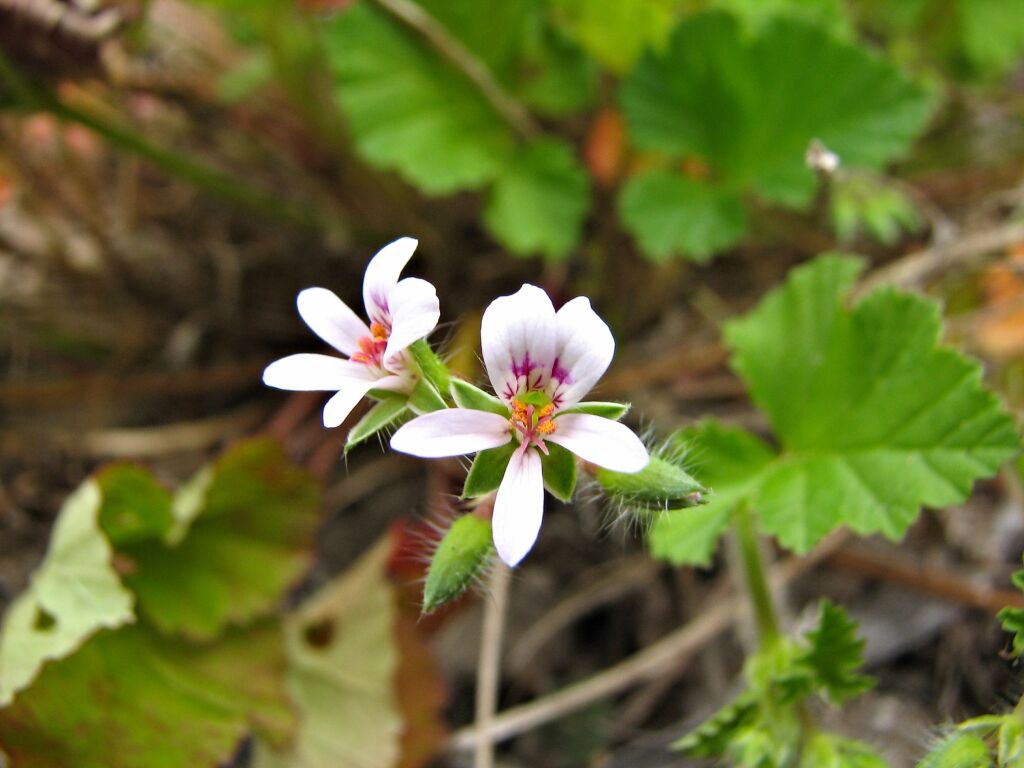Pelargonium littorale
HuegelErect to ascending perennial to c. 40 cm high; stems, peduncles and pedicels pilose, with long and short eglandular hairs and shortly stalked or sessile glands; taproot fleshy or fibrous. Leaves opposite, lamina ovate-cordate or orbicular, to 6 cm long and wide, entire to shallowly 5–7-lobed, sparsely and usually coarsely hairy to glabrescent, margin crenate or bluntly toothed; petioles to 10(–25) cm long. Umbels 2–7-flowered; peduncles to c. 8 cm long; pedicels 3–16 mm long; sepals narrowly ovate, 3–4 mm long, acute, with sparse, long (c. 1 mm or more) spreading hairs, sometimes mixed with much shorter erect hairs; sepal spur 1–3.5 mm long; petals usually deep pink, 5–6 mm long; fertile stamens 4 or 5. Fruits 14–22 mm long; mericarps pilose. Flowers Oct.–Apr.
LoM, Wim, GleP, Brid, VVP, GipP, OtP, WaP, Gold, GGr, EGL, EGU, HSF, OtR, MonT. Also WA, SA, Tas. Sattered but rather uncommon, usually on sandy soils, mostly in western Victoria.
Smith, L.P.; Walsh, N.G. (1999). Pelargonium. In: Walsh, N.G.; Entwisle, T.J., Flora of Victoria Vol. 4, Cornaceae to Asteraceae, pp. 233–236. Inkata Press, Melbourne.
 Spinning
Spinning


